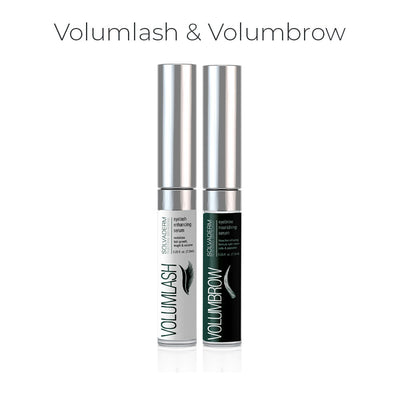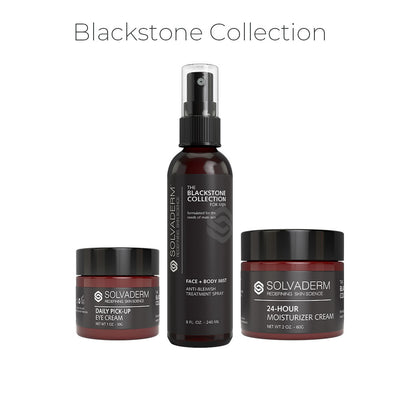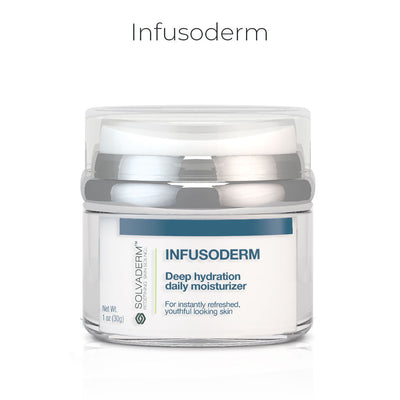While most people have either a dry or oily skin type, it’s also possible to experience both at the same time. While it seems like a contradiction, this issue is actually quite common. Why is your skin dry and oily at the same time? Most likely, you have combination skin.
Combination skin is both a skin type in and of itself, and it’s also a symptom of dehydration. If your skin is chronically lacking in moisture, it will be dry but with greasy patches as your sebaceous glands try to compensate by producing more oil in some areas of your face.
In this article, we’ll look at the symptoms of dry oily skin, possible causes, and the steps to take to bring your complexion back into perfect balance.
Symptoms of Dry Oily Skin
How do you know if you have combination skin, meaning oily and dry skin at the same time? It’s important to do a mini diagnosis on your complexion first before you implement treatment, and if you’re not certain, make an appointment with a dermatologist to confirm.
These are the main symptoms of a combination of dry and oily skin:
- Oily T-Zone: You often have oil in your T-zone, meaning your cheeks, chin, and forehead, while other parts of your face are dry.
- Dry Patches: Along with the grease in your T-zone you also have dry, flaky areas of skin, in particular on your cheeks and under your eyes.
- Breakouts: The dry patches also go along with breakouts of pimples or blackheads on other areas of your skin.
- Large Pores: Your pores are large and clearly visible, especially on the nose and forehead.
- Dandruff: Sometimes people with dry but oily skin also have a flaky scalp, leading to dandruff.
- Flaky Areas in T-Zone: It’s also possible to have oily, flaky skin in your T-zone with combination skin, a condition called seborrheic dermatitis.
Why is Your Skin Dry and Oily at the Same Time?
One of the primary causes of dry skin is dehydration, meaning the complexion is lacking in water. As a result of the dryness, the sebaceous glands may release added oil, particularly in the T-zone. A lack of hydration is one of the main causes of oily skin, but it can also occur due to factors like humidity, hormonal shifts, poor skincare habits, and stress.
However, when it comes to a combination oily, dry face, the most common cause is genetics. This skin type is usually passed down in the family, so look to your parents and other close relatives to see if they have a similar complexion.
How to Treat Dry Oily Skin
The secret to effectively treating dry, oily skin lies in making some simple changes to your twice-daily skincare routine, and for additional help, you can seek out dermatological solutions. With the proper care, you can achieve a balanced, healthy, hydrated complexion free of dry, oily, or flaky patches.
Choose the Right Facial Cleanser
If you have combination skin, it’s important to choose your facial cleanser carefully, making sure it’s free of heavy oils that could clog your pores and lead to breakouts. Look for a formula with a light, natural oil like lavender or other hydrating ingredients.
The formula you use should be free of sulfates that can disrupt your skin’s pH balance and cause dehydration. You should also look for mattifying ingredients like salicylic, lactic, and glycolic acid as you find in Rejuvoderm, which gently exfoliates to remove dead skin cells while reducing extra shine.
This rich formula deeply hydrates your complexion without drying it out, and it also firms and improves elasticity to help reduce signs of age like fine lines and wrinkles. After you cleanse your skin, add your toner right away - within a minute - to prevent it from losing moisture.
Be Mindful of Skincare Ingredients You Use
When you build your skincare routine, make sure that you select products without harsh ingredients like parabens, sulfates, and fragrances. These could strip your skin of some of the key natural oils it requires for a healthy balance. In addition, these substances could irritate and dehydrate your skin, leading to the release of oils in some areas like the T-zone, and dryness in others like the cheeks and forehead.
Follow a Simple, Yet Helpful Skincare Routine
The best way to keep your complexion healthy, prevent dryness, and reduce that oily sheen in your T-zone is to follow a basic, consistent skincare routine every morning and evening. Begin with the cleanser we recommended, and tone immediately after to remove dirt, oil, makeup, and dead skin cells from your pores.
Follow up with a lightweight, hydrating moisturizer to boost hydration and eliminate dryness, and consider adding an anti-aging serum to tighten your complexion and smooth wrinkles and fine lines. Complete your morning routine with strong SPF sunscreen.
Don’t Forget to Apply Moisturizer
We can’t stress enough the importance of applying a rich moisturizer morning and night, particularly if you have a combination of oily and dry skin. Often people with oily skin feel the need to give their skin a break, as they are afraid to make the complexion greasier and clog the pores. In fact, people with oily, acne-prone skin must moisturize religiously to maintain balance, and the same is true for those with dehydrated skin and dry patches on the face.
For an optimal all-natural moisturizer, we recommend Infusoderm. This nourishing formula deeply hydrates while also refreshing and soothing the complexion and promoting a radiant glow. In addition, it’s rich in antioxidants which repair damage to the skin barrier and promote a youthful complexion.
Use Sunscreen
Often people who get oily skin fear that sunscreen will only add to the problem, but UV damage will do much more harm. It dehydrates the complexion which can lead to excess sebum production, and it can also cause premature aging. Defend and protect your skin by applying a light, oil-free sunscreen every time you go outside.
Consider Dermaxsol, a combination moisturizer/SPF sunscreen rolled into one. This formula powerfully hydrates, while also creating a barrier to lock in moisture. It soothes the complexion, promotes healing, and has SPF 30 protection against harmful UV rays.
Follow Your Doctor's Advice
In addition to upgrading your skin products, you may also decide to see a dermatologist to seek professional advice for your combination skin. They may prescribe a topical product to reduce your symptoms.
There are also some in-office procedures like chemical peel, laser, and microdermabrasion which help exfoliate the skin and unclog the pores for a fresher, rejuvenated, more balanced complexion.
FAQ
Question #1 - What’s the difference between oily and dry skin?
Oily skin results from the excess production of sebum from the sebaceous glands, leading to a greasy surface. This may be your skin type, but excess oil production may also result from hormonal imbalance, medication, genetics, stress, and changing climate conditions.
Dry skin is also a skin type, but dryness has two main causes: dehydration, which is a lack of water, and a shortage of sebum production, which is a lack of oil.
Question #2 - Why is my skin dry then it gets oily?
The skin’s response to dehydration may be to produce additional sebum in order to protect the moisture barrier and boost hydration levels. This is why dry skin may appear itchy, tight, and oily at the same time.
Conclusion
If you experience dry, flaky patches on your complexion with an oily T-zone, you likely have combination skin. While there are a number of factors that can cause this issue, most often it's an inherited feature that you got from your parents, and is your regular skin type.
The solution lies in making some modifications to your skincare routine to ensure proper balance. Start building the optimal regimen for combination skin by exploring the Solvaderm collection of quality, science-backed skincare. Our line of products will keep your dry skin hydrated and your oily skin balanced, and give you a youthful complexion glowing with good health.








